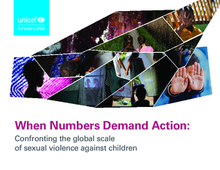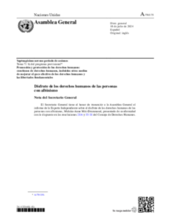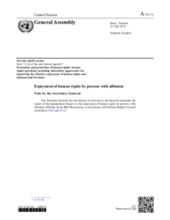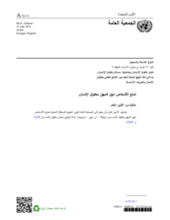Displaying 21 - 30 of 468
This UNICEF publication presents the first-ever global and regional estimates of sexual violence against children. It narrates through numbers the tragic reality of sexual violence, amplifying victims’ voices.
This scoping review identified and synthesized evidence from studies across the globe examining adult justice system contact among individuals who have experienced child protection system involvement (including placement in out-of-home care [OOHC]).
Case studies from Peru, Cambodia and DRC provide lessons on how income support can contribute to keeping children safe.
This webinar showcases global approaches to creating safe environments and communities. Speakers focused on the lessons learned, challenges, adaptations and key ingredients of successful interventions.
The article explores the implications of the use of clientelism in orphanage trafficking for prevention efforts, child protection governance reforms, and rehabilitation of children whose perception of exploitation and victimization has been shaped by their socialization to clientelism norms
В настоящем докладе Независимый эксперт по вопросу об осуществлении прав человека людьми с альбинизмом излагает точки зрения, результаты осу-ществления совместного исследовательского проекта и рекомендации по реше-нию повседневных проблем и улучшению жизненной ситуации детей с альби-низмом в контексте права на семейную жизнь.
En el presente informe, la Experta Independiente sobre el disfrute de los derechos humanos de las personas con albinismo presenta diversas perspectivas, las conclusiones de un proyecto de investigación conjunta y recomendaciones para hacer frente a la difícil situación que viven a diario las niñas y los niños con albinismo y mejorar sus experiencias vitales en el contexto del derecho a vivir en familia.
In the present report, the Independent Expert on the enjoyment of human rights by persons with albinism provides perspectives, the findings of a joint research project, and recommendations on improving the daily challenges and life experiences of children with albinism in the context of the right to a family life.
في ا اذهلترّرّ قرد الببنّا ةلتمتا رلنامة متمتا الأباا ذوا يلمهق أحا قورلإتنا وجهات نظّ ونتائج مشــــــــّوت أح مشــــــــتّا وقوفــــــــةات أشــــــــا نلتب ةا نم للت








